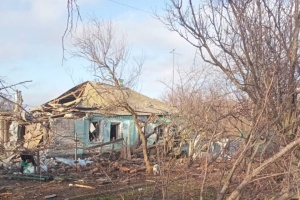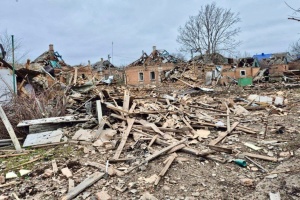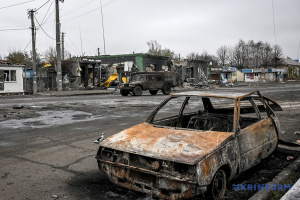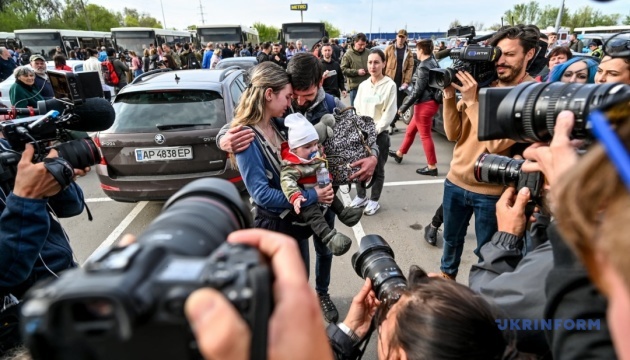
Those who got out of hell
Some 150 civilians, who were hiding in the basements of the Azovstal steel plant in Mariupol for more than 50 days, finally reached Zaporizhzhia.
They were evacuated as part of a special operation, which is called the most difficult since the beginning of the war. The holding of the operation was kept in strict secrecy. It is known that Ukrainian President Volodymyr Zelensky took personal control of the issue.
"UN Secretary General Antonio Guterres arrived in Kyiv to hold talks with President Zelensky. We joined as managers and coordinators of this project. We agreed for several days on our further actions. You know that communications is poor there and there's a danger of shelling. When you go from Zaporizhzhia to Mariupol, there are 15 checkpoints, and each of them has their own power, their own agreements, their own generals. I don't even want to list how many of them are there. We needed a [humanitarian] 'corridor' to Azovstal itself, because there is another government in Mariupol. We succeeded. I thank the president, the UN - they worked here, and I thank the Red Cross as they really did what they had to do. This was the most successful evacuation operation from Azovstal. Less success was achieved in Mariupol itself, but we have already created the corridor and we won't stop. The Red Cross is ready to go to Mariupol," Iryna Vereshchuk, Ukraine's Deputy Prime Minister and Minister for the Reintegration of Temporarily Occupied Territories, told Ukrinform.
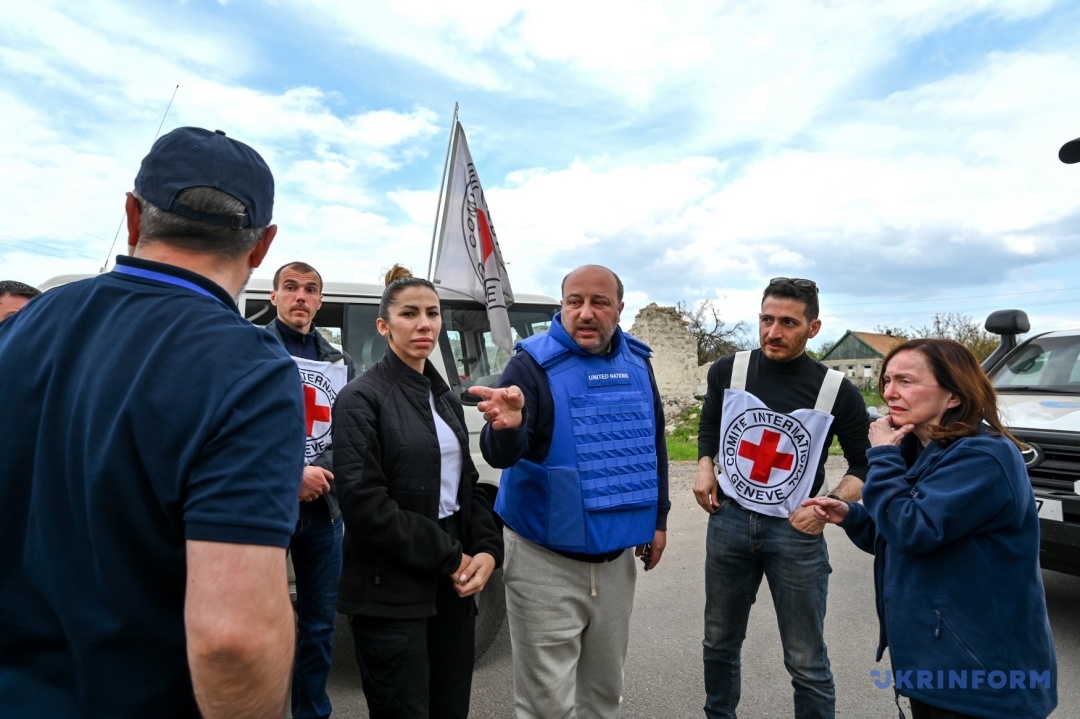
PEOPLE WERE DETAINED FOR ONE DAY DUE TO 'FILTRATION'
Evacuees from Azovstal were to be brought to Zaporizhzhia on the morning of May 2. It seemed that all media outlets from around the world came to the city on that day. Journalists were on duty at a registration center for IDPs from early in the morning until late in the evening, when it emerged that a convoy of evacuees was still on its way and was expected to arrive no earlier than May 3.
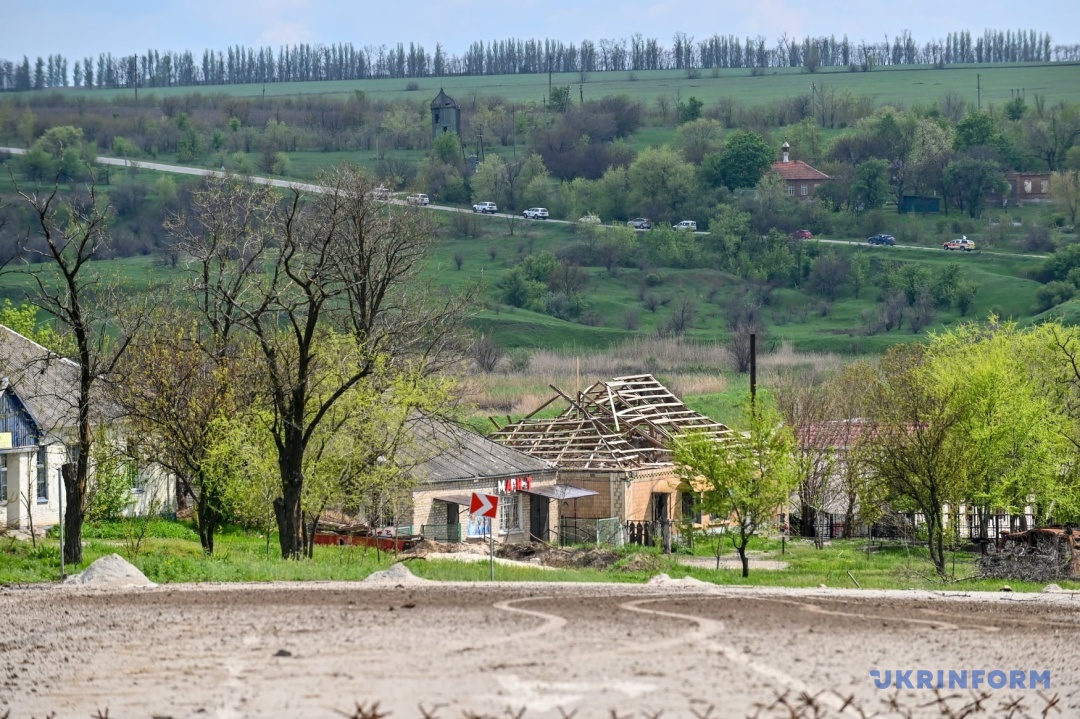
Vereshchuk told the agency that the convoy stayed in Bezimenne (Donetsk region) for a long time.
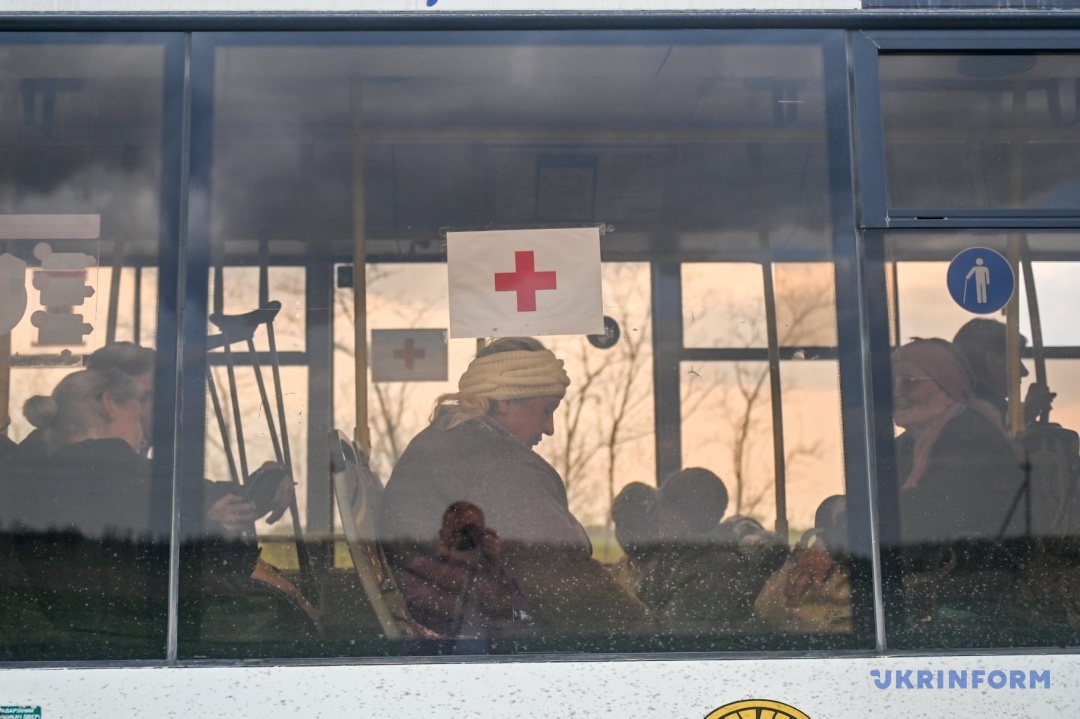
"We spent the night in Dmytrivka. There are filtration camps that do not comply with the Geneva Conventions. There were UN representatives there, they saw everything with their own eyes, and I am sure that they will testify in the International Criminal Court about what really happened," she said.
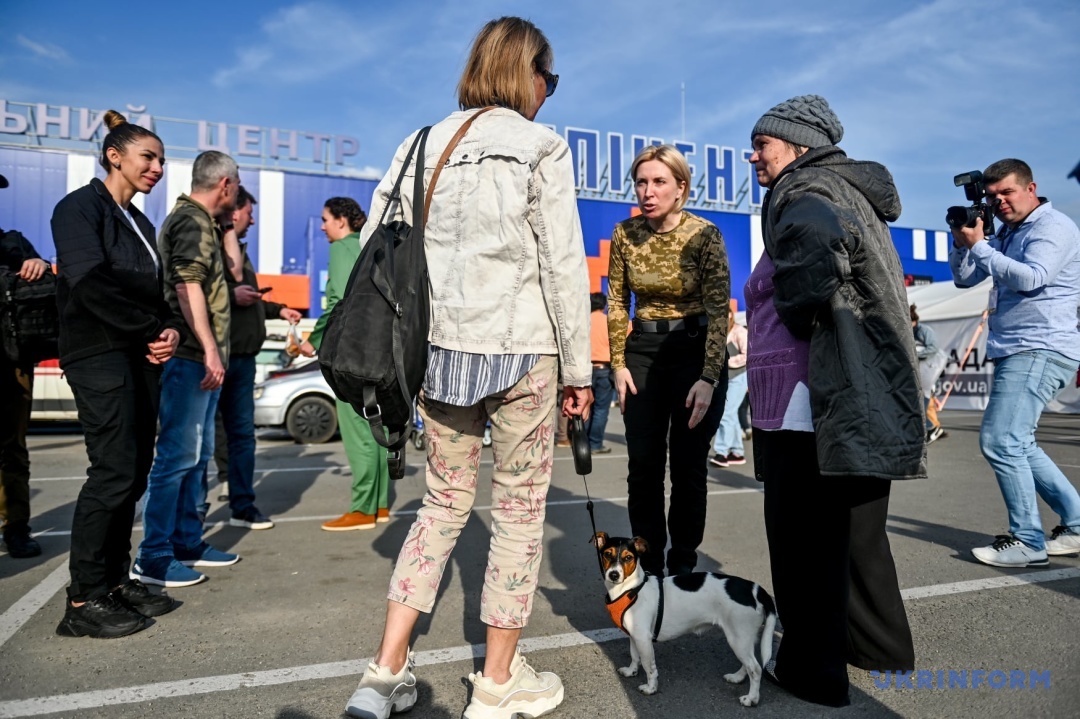
According to Vereshchuk, the Russian military did not allow a female police officer and her child to enter Ukrainian-controlled territory.
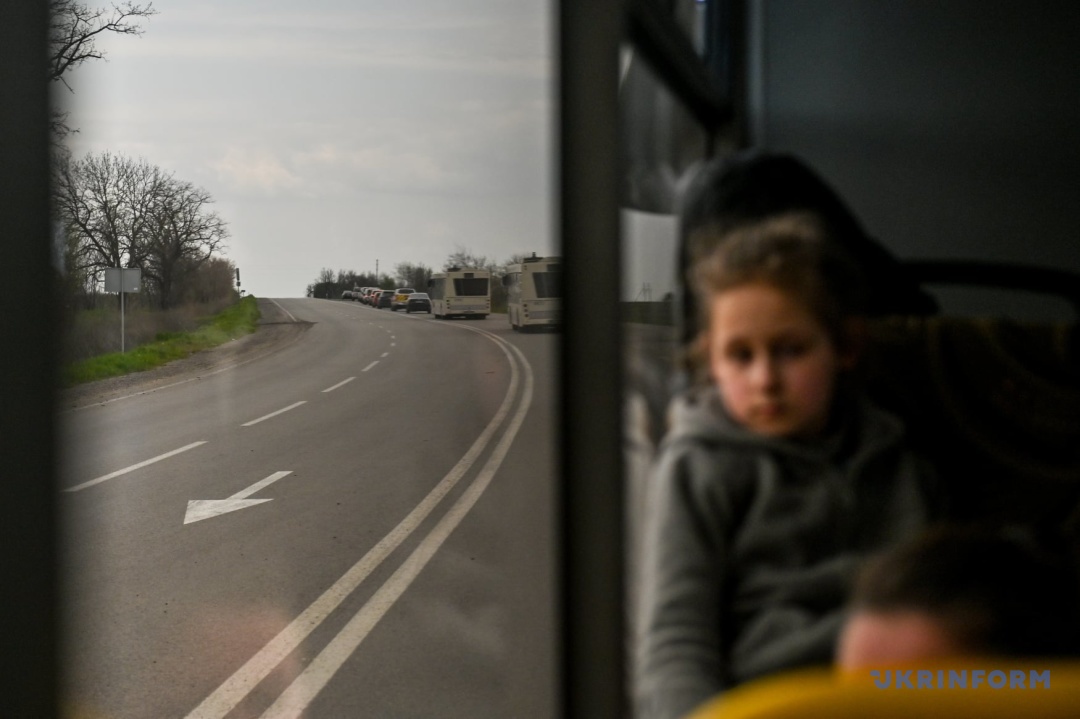
"According to international conventions, she is a non-combatant, and we included her in the lists as a civilian. We will find out why she was not allowed to leave," the minister added.

On May 3, at 09:00, about a hundred representatives of the media and the UN stayed at the registration center. Within hours, people began to arrive from the occupied territories in private vehicles. Nobody said anything about Azovstal. They only said, "they are going, wait."
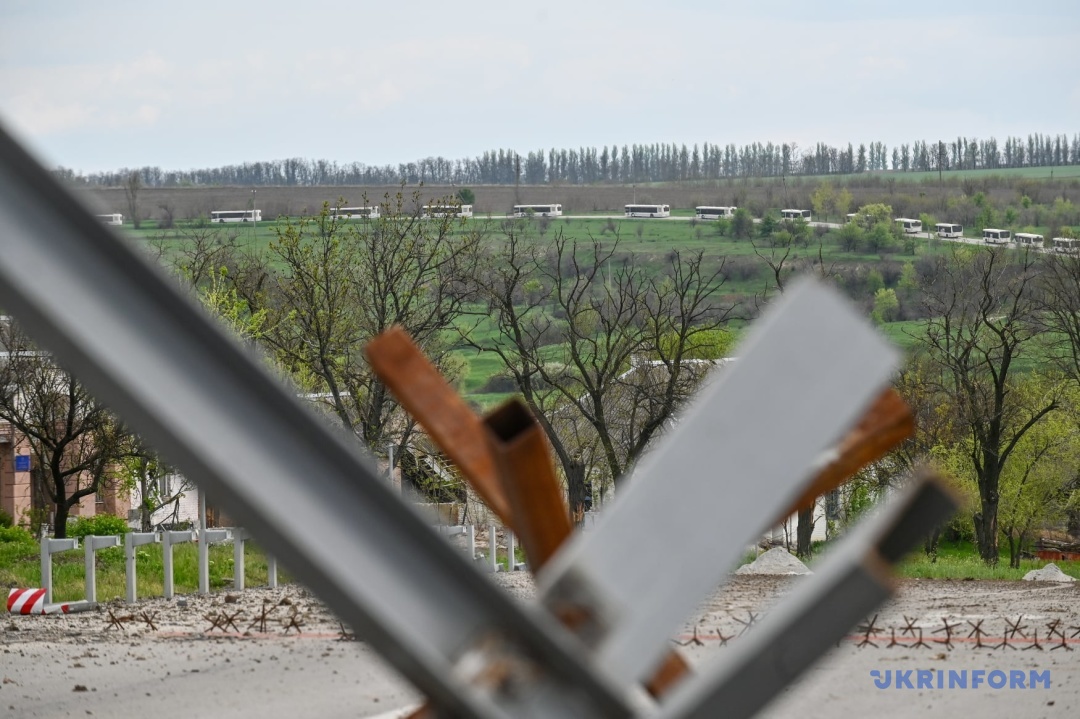
At 12:30, it came out that the convoy was at another checkpoint near Vasylivka. In peacetime, the road to Zaporizhzhia would take half an hour, well, maybe 40 minutes. But given the Russian checkpoints, there was a threat that today people may not come at all. There were many cases when the Russian military "marinated" people not for hours but for days.
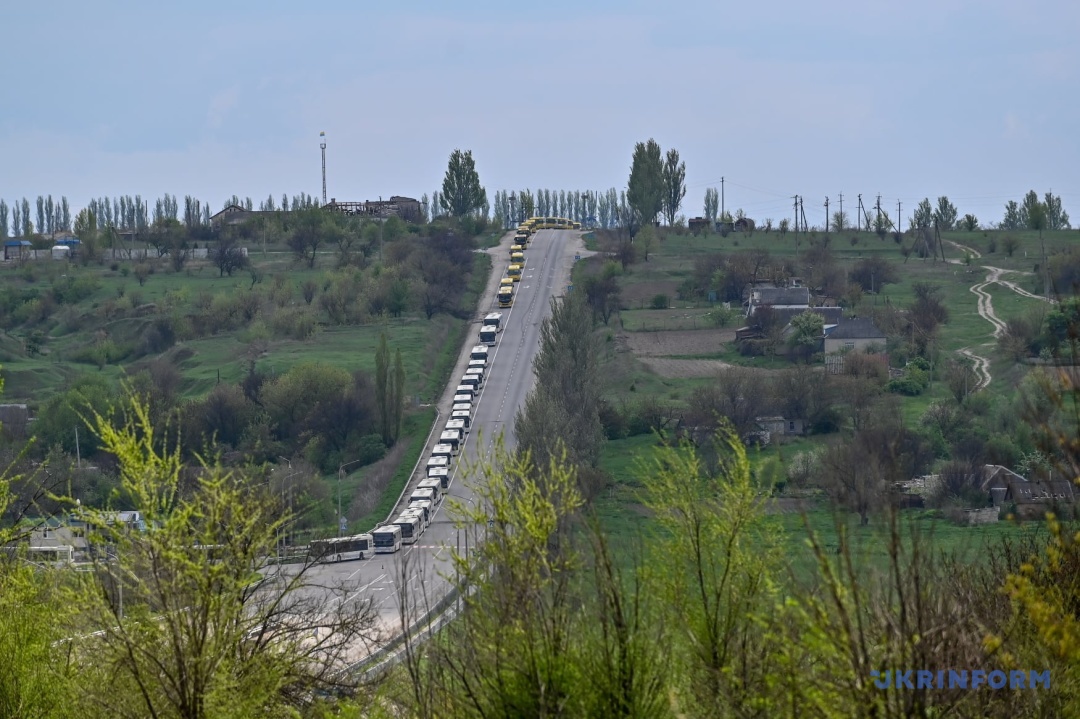
At about 16:30, the convoy arrived in Zaporizhzhia. Evacuation buses arrived, and people got out of them in a few minutes.

STAYING IN THE BUNKER WITH NO SUN AT ALL
A 14-year-old boy named Vova was one of the first to agree to talk to reporters. In the bunker, he said, there were thirty of them, including ten children, the youngest child being only one-and-a-half years old.
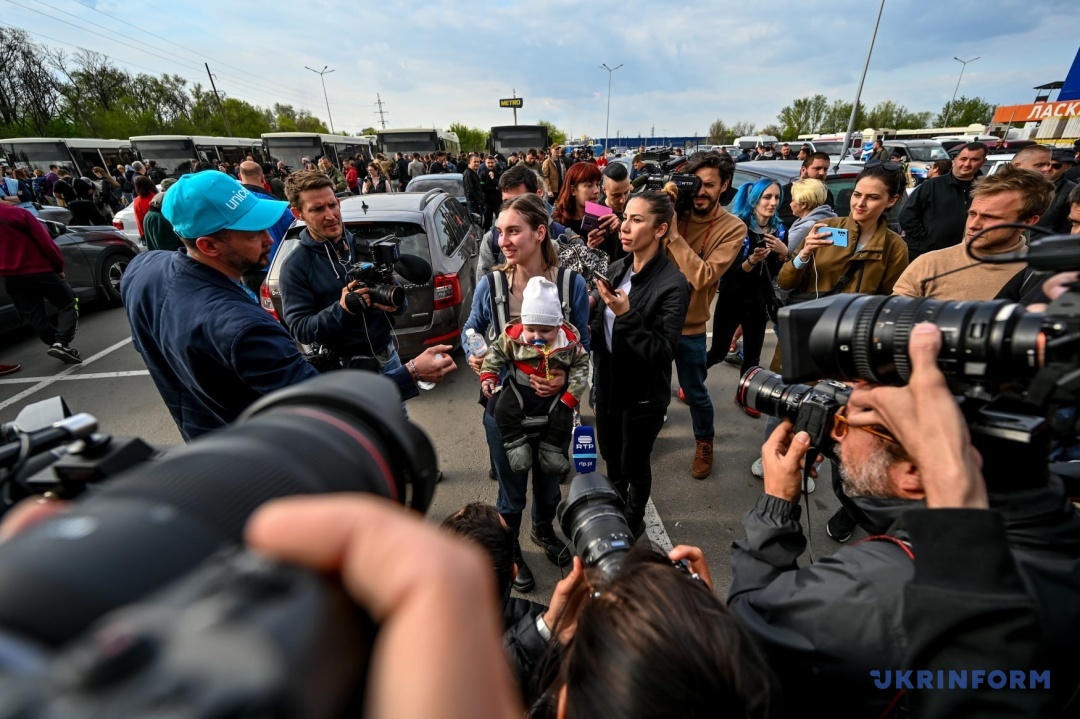
"We had been hiding at Azovstal for almost two months. We came there with my mother on March 6 or 7, I don't remember for sure. Our father brought us there, and he said it was the safest place. My father is a soldier, he is still there. We were staying in the bunker all the time and we did not see the sun at all. I would like to tell my father that we are fine and that he should be more careful," the boy said.
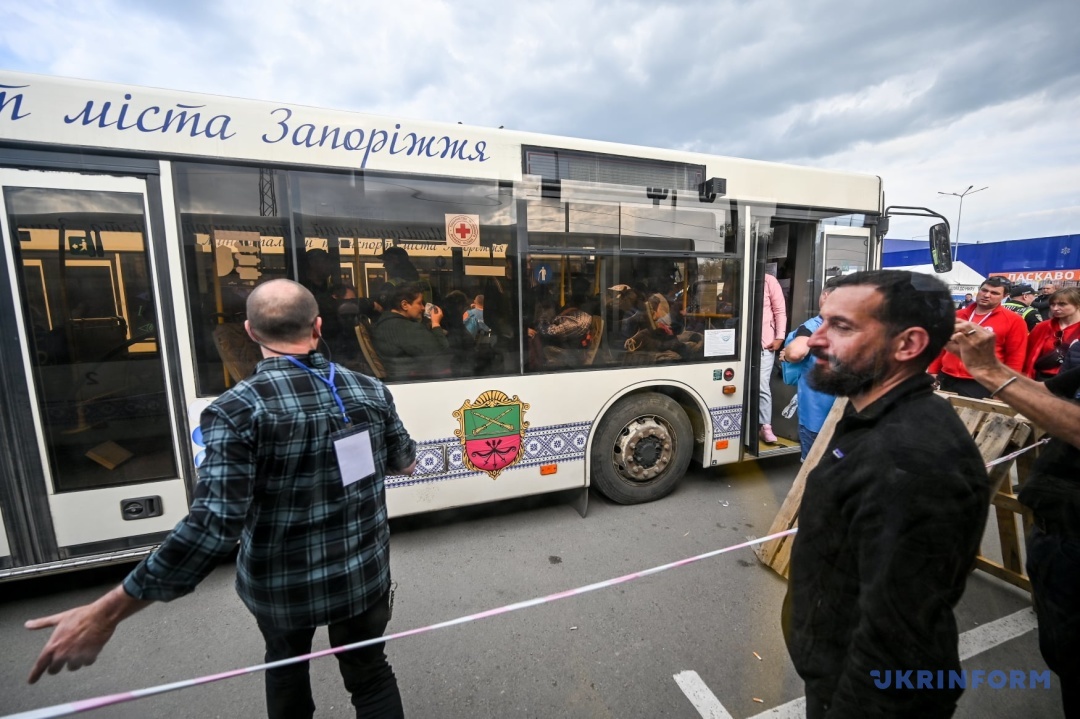
According to him, the Ukrainian military brought food to people hiding in bunkers.
"If it weren't for them, we wouldn't be here," Vova said.
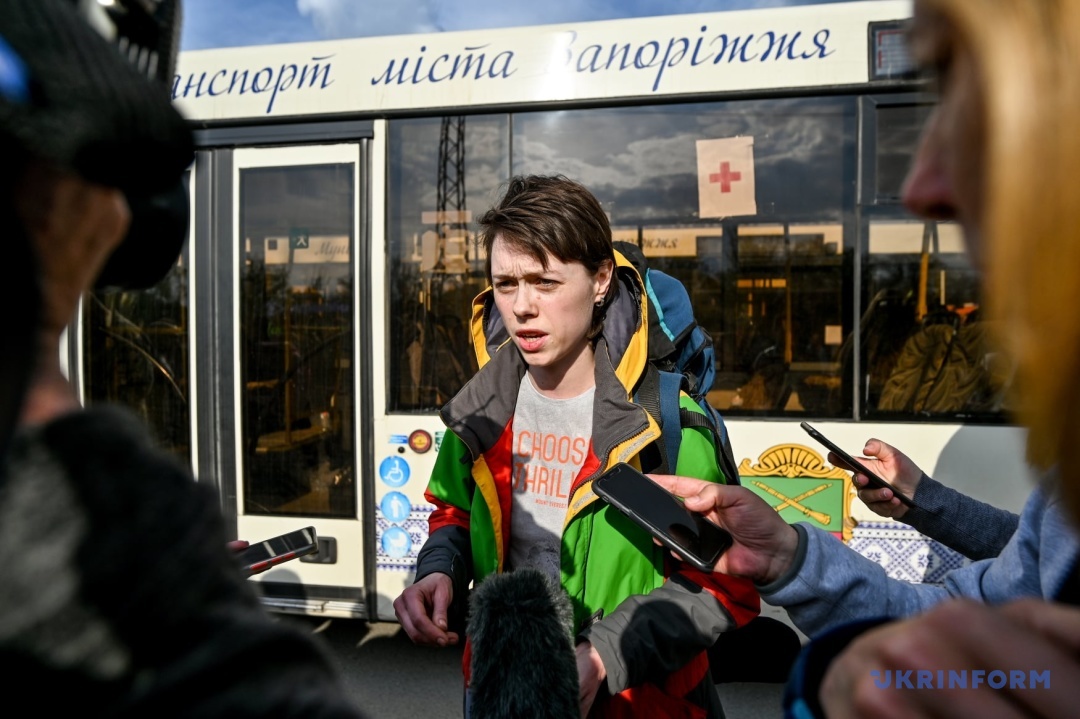
Nadiia Tkachova, who was also hiding at Azovstal, said it was safe at first, but in mid-March the ring around the steel complex shrink began to shrink.
"Everything was flying at the plant from the sea, from the air. Three-tonne bombs were falling. Many died. No one is buried, it's impossible. All the dead lie on a slag heap in the factory. There are many of those wounded. There are still about 200 civilians left there, including 30 children," she said.
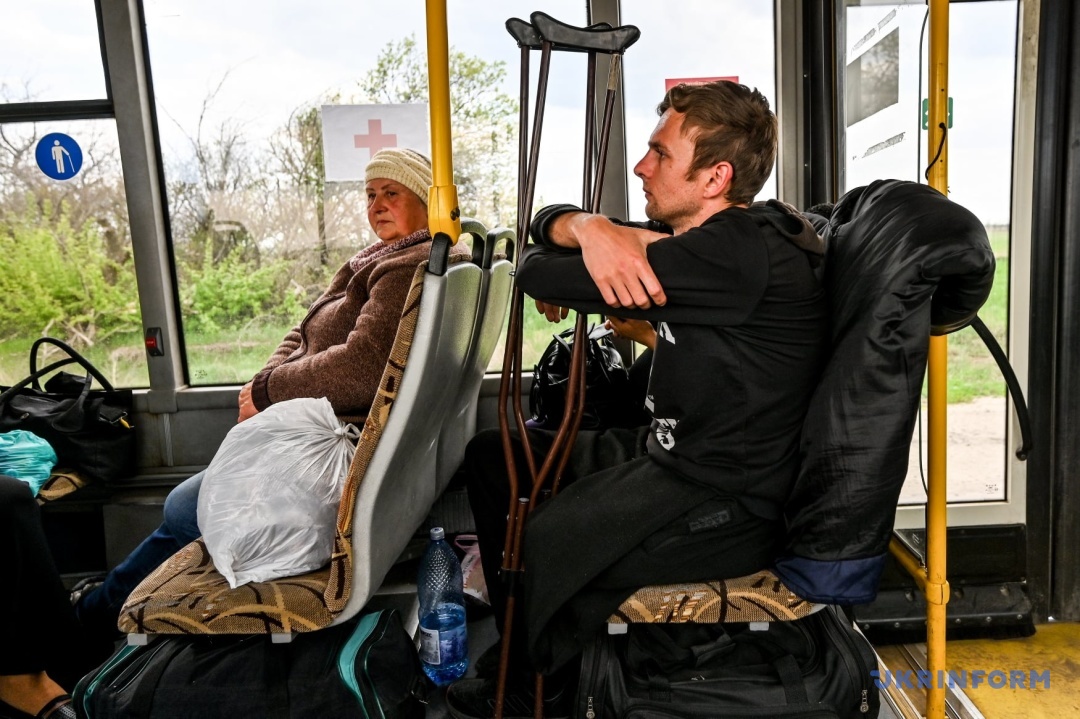
She says the worst thing is the daily shelling. She is very worried about the Ukrainian military who remained at Azovstal.
RUSSIANS PROMISED TO SEND WIVES OF MILITARY MEN THE HEADS OF THEIR HUSBANDS
Kateryna, 31, was hiding from Russian "liberators" in the bunkers of the plant together with her two sons - 11 and 6 years old. They had been there since March 10. She says they could neither go out nor open the door.
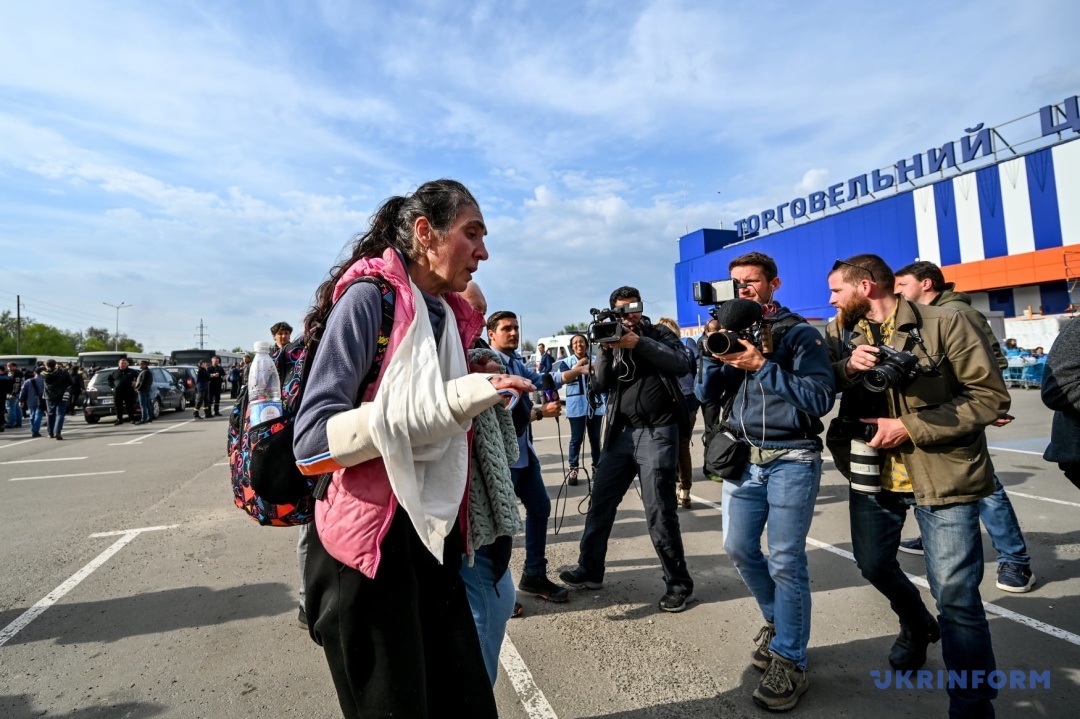
"The kids were afraid. But we still hoped that we would get out of there. At night we said goodbye to life and thought, 'Well, we lived our lives somehow- and that's enough.' When we were leaving, they brought us for the so-called screening - it's something like registration. We were taken to tents and ordered to take off our clothes – men and women separately. They checked us for scars, tattoos, and they even looked at panties. They examined our backpacks, read all the messages on our phones, and asked us all the time about the military, even about the depth of the basements where we stayed. The wives of military men were threatened and told that they would be found, they promised to send the heads of their husbands in boxes," says Kateryna.
She says they went to Azovstal because everyone knew that there were bunkers there that could withstand bomb attacks. But no one expected the plant to be encircled.
"I would not want to leave Ukraine. We believe that Ukraine will hold out and everything will be fine, that we will have a bright future. After the victory,

I would like to see Mariupol again, but probably I would not like to live there. What we saw in the city when we left were boxes with huge black holes inside. There are no houses, there are remnants of them. Now I plan to go to Ivano-Frankivsk, I have friends there," says Kateryna.
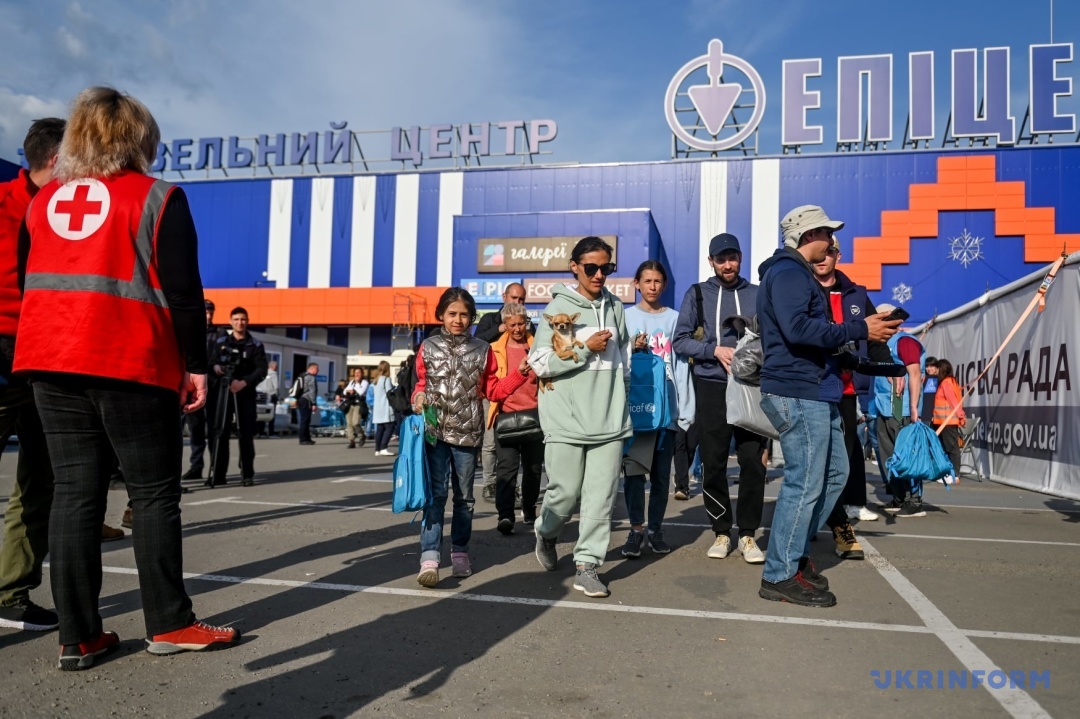
HEY REDUCED OUR LIVES TO ASHES
Elina Tsybulchenko, a 54-year-old employee of the Azovstal plant, said she had been hiding in the bomb shelter of her native plant with her daughter, son-in-law and husband since March 2.
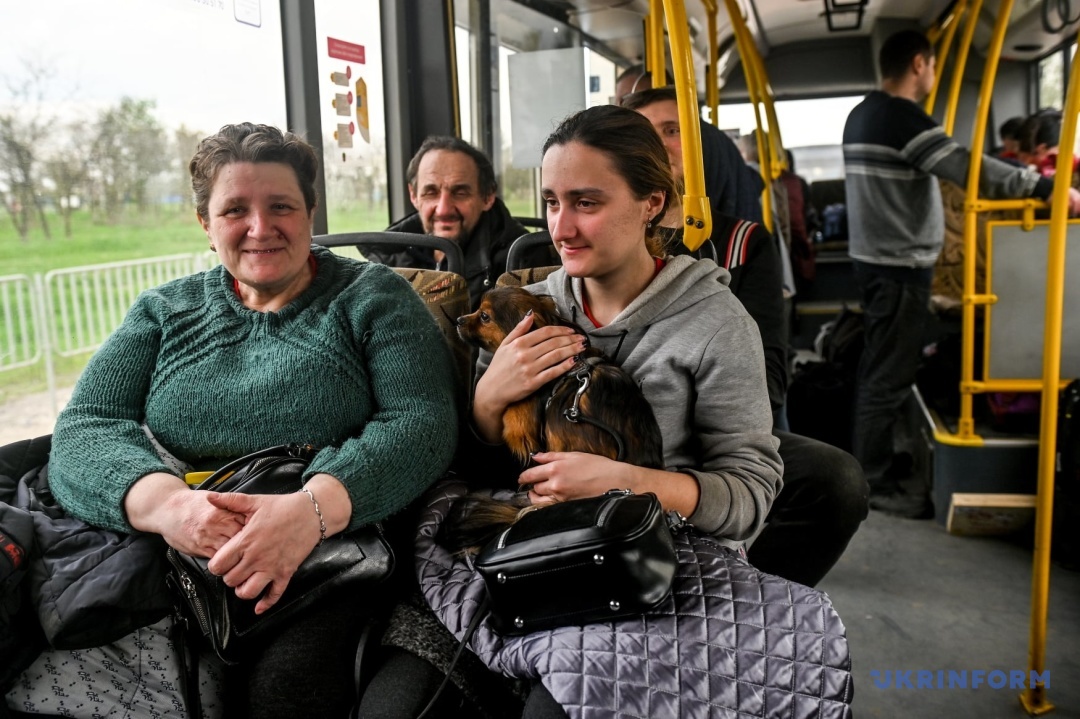
The woman knew that there was water in the bomb shelter, and it was difficult to get it in the city. So they came there and couldn't get out any longer.
"Our whole life has been reduced to ashes. We lay in the corridor of our apartment for four days, because, as we were told, it was safe there, but then a shell hit our building. I never knew what fear was. We did not pack an emergency go bag, as we did not do it in 2014. We thought that it would not come in handy even now. My mother said, 'Come on, don't panic, he (Putin) won't dare [to invade Ukraine].' She would have turned 82 on May 1... My mother went missing on March 2. My husband and I ran around the city and saw a lot of corpses. There was just a black hole in our house - no furniture, no walls. It was very scary. All houses are destroyed. Our thriving city has turned into a pile of garbage. And after March 2, we were no longer in the city," the woman said.
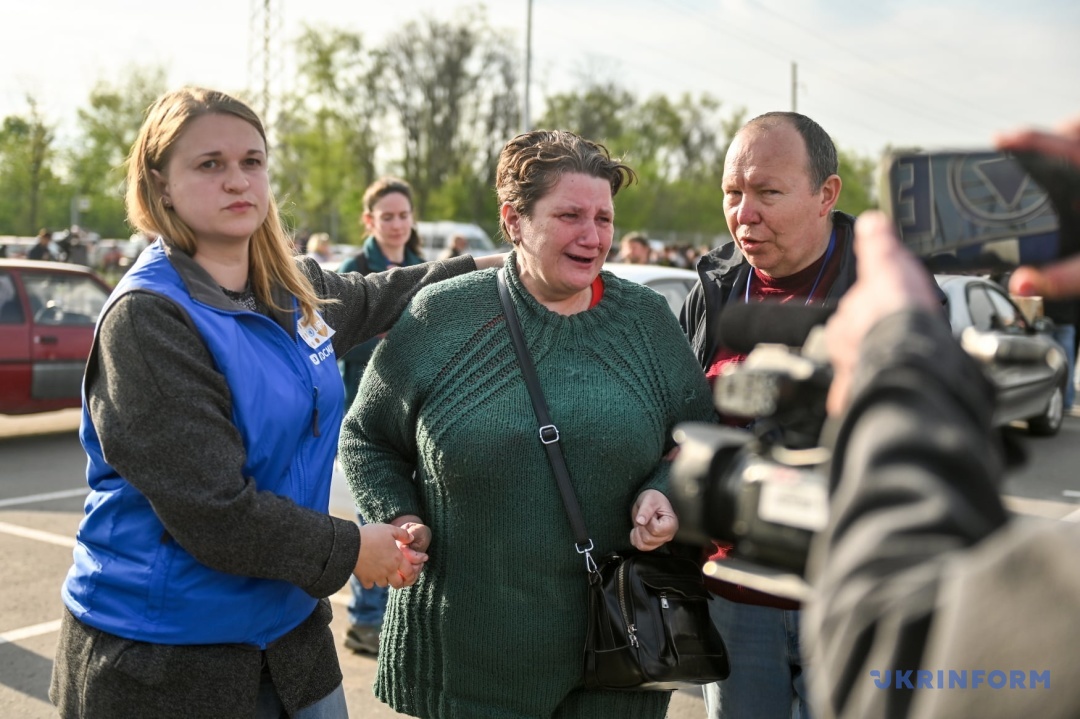
There are 42 people left in the bunkers at the plant. The Russians did not allow them to leave.
"When our military took us out of the factory, we heard their talks. The Russian military said, 'Take out your 11 pencils.' That is, we are '11 pencils.' The Russian military said, 'Don't go to Ukraine, you're going to war.' But we don't see life in another country, " the woman added.
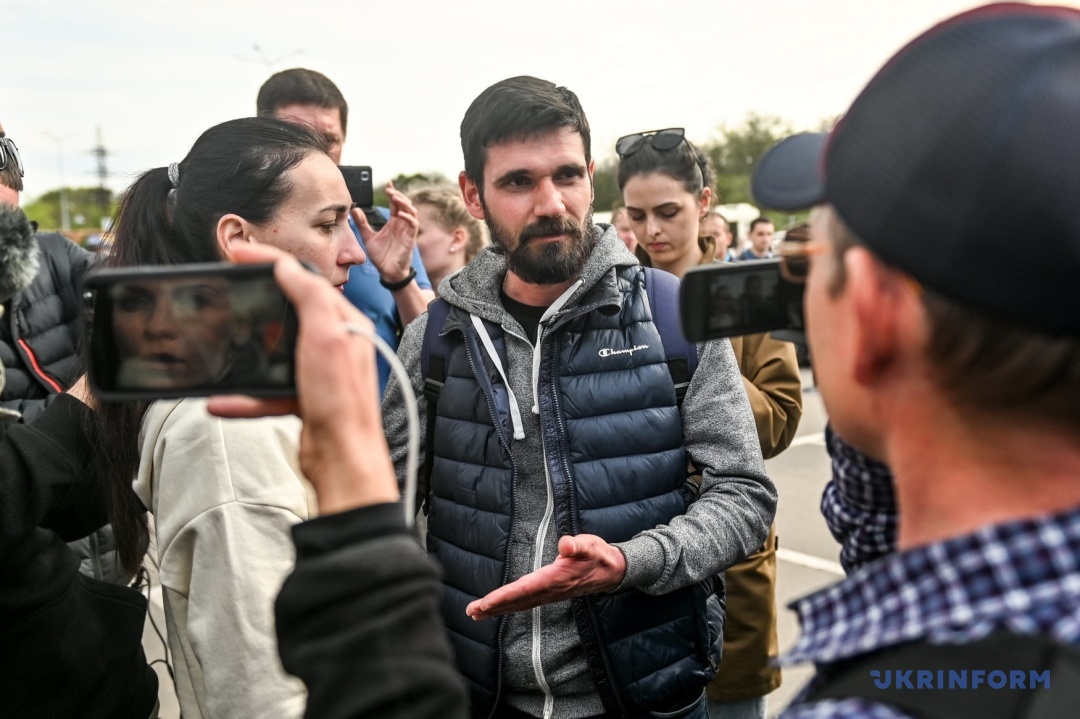
She also said that people had to collect food from the ground not to die from hunger.
Oksana, 43, and her two sons, aged 10 and 14, were taken to an Azovstal bunker by her military husband.

"We've been in the bunker since March 7. It was already very dangerous in the city. People remained in the basements of their destroyed houses. Nobody expected them shelling the city like that. We thought they would be shelling only the city outskirts, as they did in 2014," the woman said.
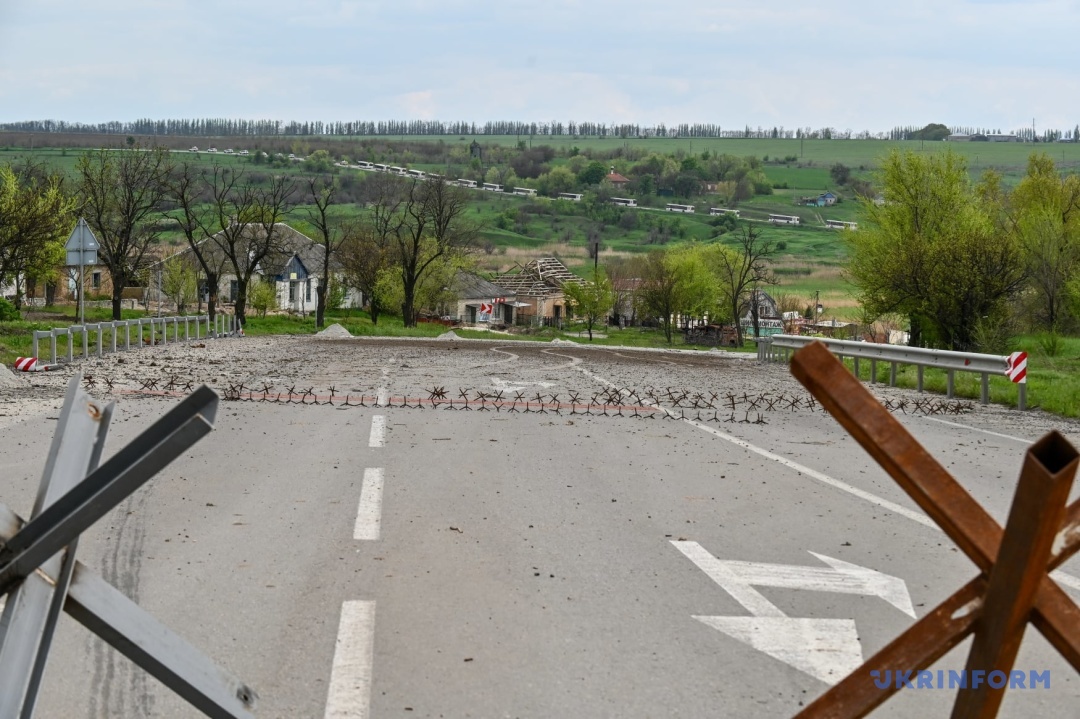
Now, most of all, she wants her husband to get out of that hell, but there is no contact with him.
"Many people died and there is no help, but our military remained there! Well, can't they be exchanged somehow for Russian prisoners? Why doesn't the Russian president value his people, why doesn't he exchange them?" she asks, holding back her tears.

Meanwhile, officials say the operation, unofficially called "Evacuation Azovstal," will last as long as all people emerge from the rubble of the plant. It is estimated that several hundred more civilians and Ukrainian servicemen, including those seriously wounded, are still trapped at the plant.
Meanwhile, the Russians continue to attack Azovstal with air strikes, and Mariupol remains under siege.
Olha Zvonariova
Photo credit: Dmytro Smolienko

